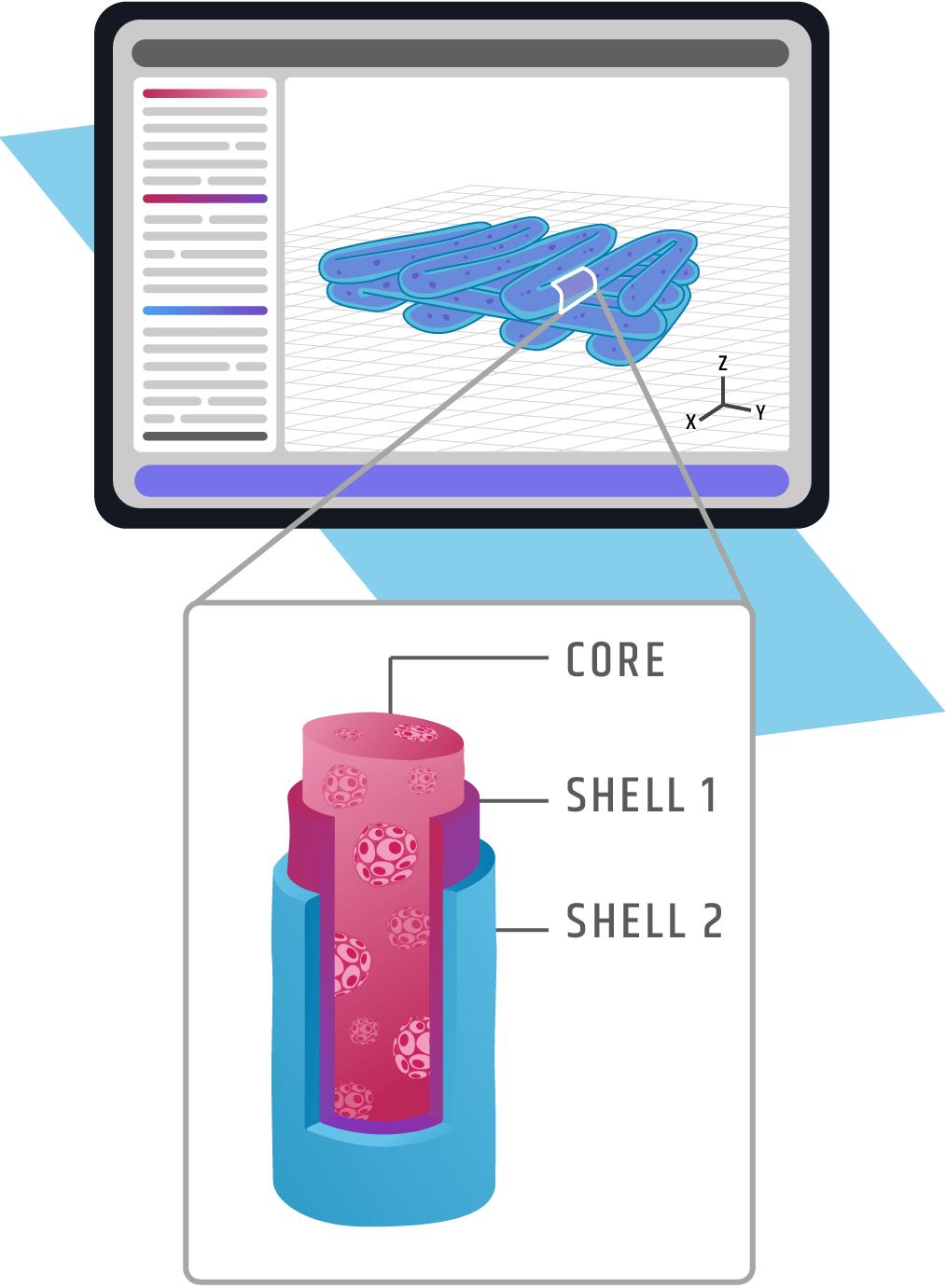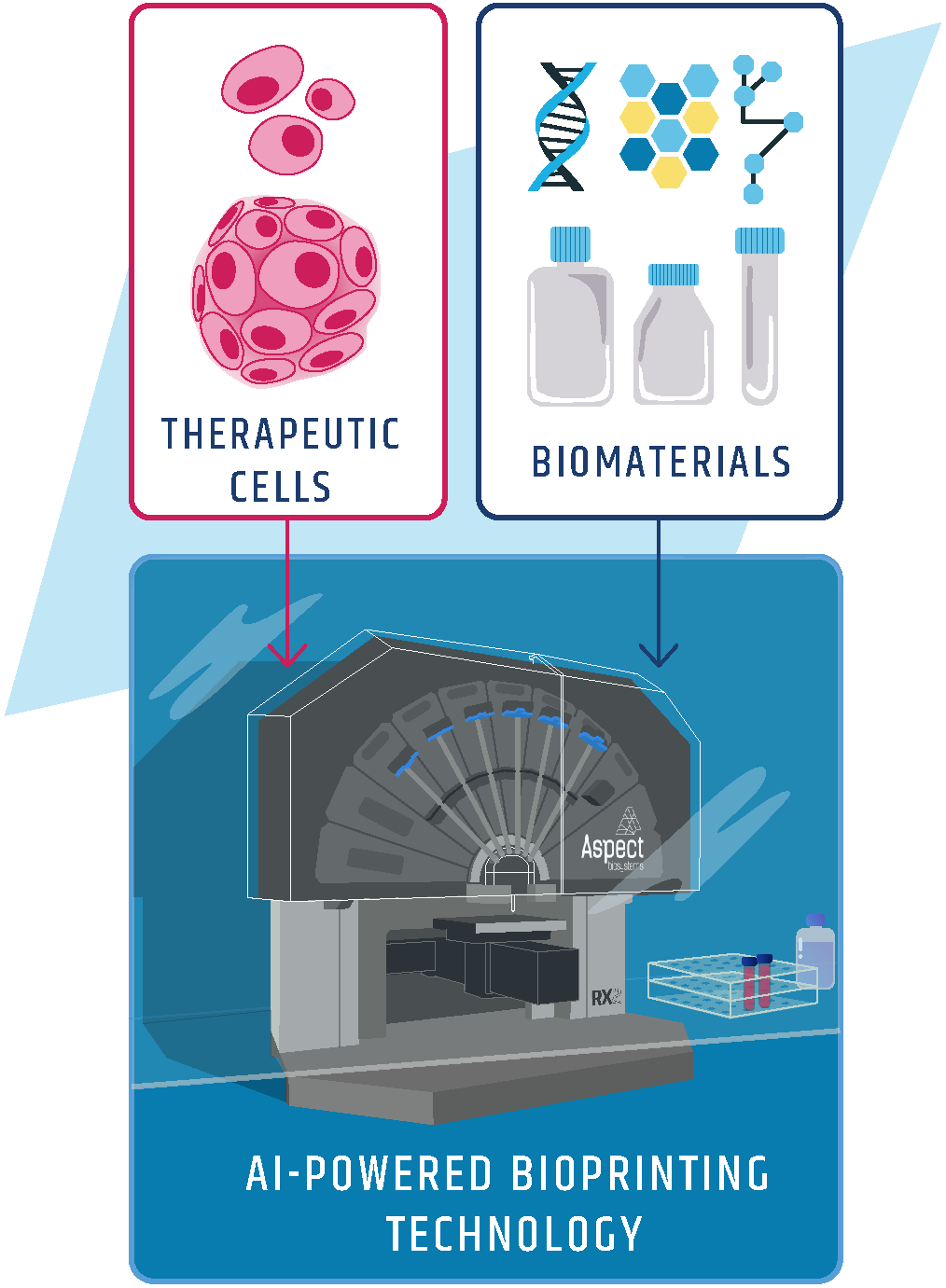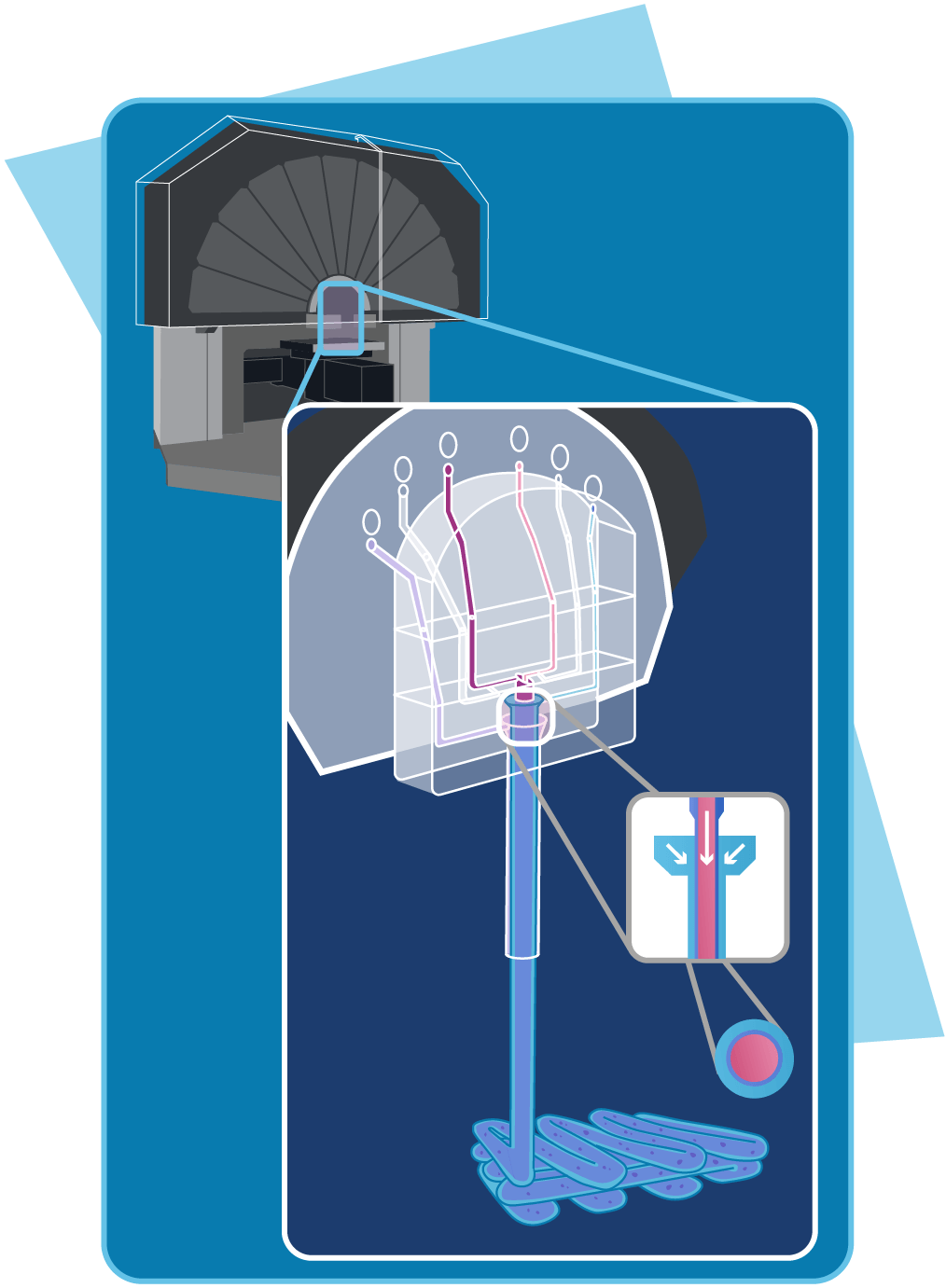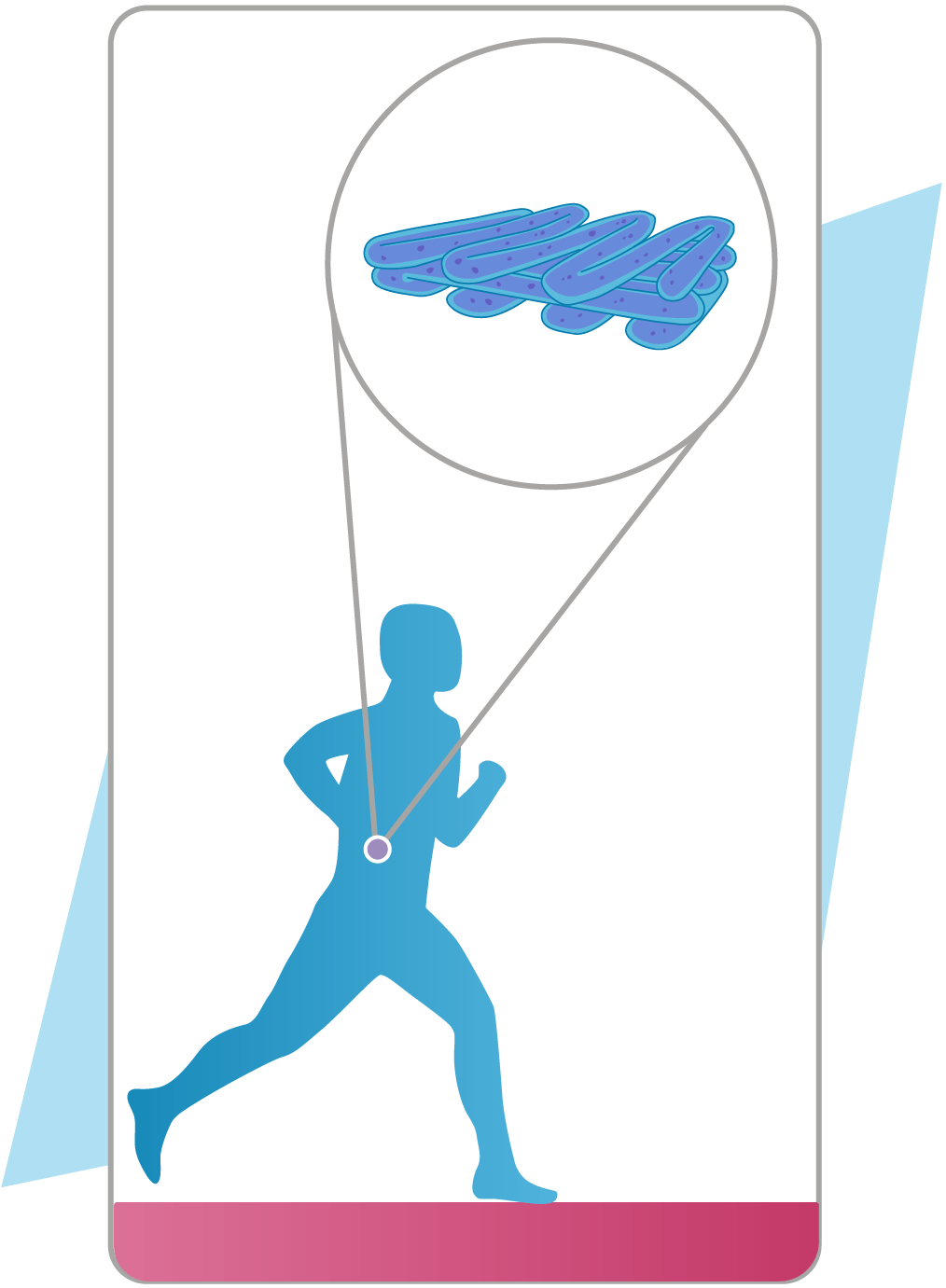Our full-stack tissue therapeutic platform integrates our proprietary AI-powered bioprinting technology, computational design tools, therapeutic cells, and advanced biomaterials.
Our Bioprinted Tissue Therapeutics are designed and manufactured to be biologically functional, immune-protective, and suitable for surgical implantation, and have the potential to transform how we treat some of the most elusive diseases.
our platform
1. Computational Tissue Design

2. Cell & Biomaterial Processing

3. Manufacturing of Tissue Therapeutics

4. Implantation & Functional Cure
